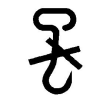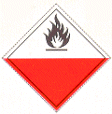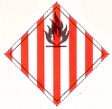| Cotton | [German version] |
Table of contents |
|
| General: | ||
| Product information | ||
| Packaging | ||
| Transport | ||
| Container transport | ||
| Cargo securing | ||
Product information
Product name
| German | Baumwolle (Lint, Rohbaumwolle) |
| English | Cotton (lint, raw cotton) |
| French | Coton |
| Spanish | Algodón |
| CN/HS number * | 5201 00 ff. |
(* EU Combined Nomenclature/Harmonized System)
Product description
Cotton belongs to the category fibers/fibrous materials, which are classified as follows [24]:
Plant hairs:
| Cotton seed-hairs | |
| Kapok tree fruit hairs |
Stalk fibers from dicotyledonous plants (soft fibers):
| Flax, ramie (fine spinnable fibers) | |
| Hemp, jute, kenaf (coarse spinnable fibers) |
Leaf fibers from monocotyledonous plants (hard fibers):
| Sisal, Manila hemp, palm fibers (poor spinning characteristics) |
Bast:
| Linden, raffia palm, willow | |
| Basketwork material: | |
| Coconut fiber, rattan cane, halfa, piassava, esparto |
Cotton consists of the unicellular seed-hairs of the bolls of the cotton plant (Gossypium hirsutum), which belong to the „plant hair“ category. The cotton plant itself belongs to the mallow (Malvaceae) family. The fruits of the cotton plant burst when ripe, revealing a fist-sized tuft of cotton consisting of fibers up to 50 mm in length. Once picked, the cotton is dried in the sun and ginned (separation of seeds from fibers).
The plant fibers have a pronounced three-walled structure. The outer wax layer protects the primary wall. The most important element is the secondary wall, which consists predominantly of cellulose. The tertiary wall surrounds the lumen, which, in all cellulose materials of plant origin, is very well formed and filled with air (see Figure 1).
The chemical composition of cotton is as follows:
| cellulose 91.00% | |
| water 7.85% | |
| protoplasm, pectins 0.55% | |
| waxes, fatty substances 0.40% | |
| mineral salts 0.20% |
Quality / Duration of storage
The quality of cotton is assessed according to the following criteria:
| Grade: cleanness, leaf content and other foreign matter of vegetable origin | |
| Color: color defects and staining | |
| Nature: ripeness, nep and nub content, uniformity | |
| Staple: composition of fiber material with regard to length | |
| Micronaire: fiber fineness | |
| Pressley: fiber strength |
Color variations and loss of luster may indicate mold or bacterial attack. At 25 – 35°C and a relative humidity of 80 – 90%, color variations caused by microorganisms may be observed after as little as 3 – 4 weeks. Moisture-damaged bales must not be accepted.
Cotton is classified as follows according to staple size:
| Long-staple cotton: > 35 mm, e.g. Egyptian cotton, maco cotton; fine, with a silky luster and generally cream-colored. | |
| Medium-staple cotton: 25 – 35 mm, e.g. upland cotton (80% of world production), American cotton; white to yellowy-white. | |
| Short-staple cotton: < 25 mm, e.g. Indian cotton; generally yellowy-white to brownish and of lower quality, since often nonuniform and hard. |
In addition to the long fibers, cotton also contains so-called cotton linters. These are short felt-like hairs (2 – 4 mm), obtained by further ginning of the seeds. Owing to their short staple length, they are not suitable for spinning, but instead serve as a starting material for cellulose-based manmade fibers and filaments and for cotton wool production.
The most valuable type is long-staple, fine-fiber cotton. Long cotton fibers have good spinning characteristics, strength, dyeability and resistance. Because it is so readily spinnable, cotton is the most important, most widely processed natural fiber of plant origin.
Intended use
Cotton is primarily used in textile production, specifically for bed, household and table linen and for ready-made garments.
Figures
(Click on the individual Figures to enlarge them.)
 Figure 1 |
 Figure 2 |
 Figure 3 |
 Figure 4 |
 Figure 5 |
Countries of origin
| Europe | Bulgaria, Spain, Russia, Turkey |
| Africa | Egypt, Ivory Coast, Mali, Burkina Faso, South Africa, Sudan, Chad, Zimbabwe, Ethiopia, Algeria, Uganda |
| Asia | Burma, India, Pakistan, China, Iraq, Syria, Afghanistan, Iran |
| America | El Salvador, Guatemala, Mexico, Nicaragua, USA, Honduras, Argentina, Brazil, Venezuela |
| Australia |
This Table shows only a selection of the most important countries of origin and should not be thought of as exhaustive.
Back to beginning
Packaging
Cotton is usually shipped in largely square bales compressed to different degrees. The bales are tied firmly with steel straps or wire.
Strapping is essential to maintain compression of the bales during transport. If the strapping is damaged or broken, compression is diminished, which at the same time results in an increased supply of oxygen to the inside of the bales. This in turn increases the risk of combustion or feeds a fire which has already started. Bursting or chafing of the steel straps and wires may lead to sparking and external ignition.
To protect the cotton bales from contamination and damp, they are wrapped in jute or plastic fabric, or sometimes in plastic films perforated so as to regulate bale moisture content.
Bales vary in size and weight between 100 and 330 kg depending on country of origin.
 Figure 6 |
 Figure 7 |
| Marking of packages | ||
 Keep dry |
 Use no hooks |
 Keep away from heat (solar radiation) |
Back to beginning
Transport
Symbols
 Cotton, wet Spontaneously combustible, Class 4.2 IMDG Code and ADR |
 Fire hazard (Flammable solids), Class 4.1 IMDG Code |
 General cargo |
Means of transport
Ship, truck, railroad
Container transport
Standard containers, subject to compliance with water content of goods, packaging and flooring.
Cargo handling
In damp weather (rain, snow), the cargo must be protected from moisture, since cotton is strongly hygroscopic and readily absorbs moisture. This may lead to discoloration, decay, mold, mildew stains and rot. In addition, the cotton may swell by absorbing water vapor, resulting in an increase in volume of 40 – 45%. A high water content is difficult to detect from outside, since the cotton does not feel damp even with a water content of 20%.
Do not use hooks for cargo handling, since they may lead to sparking when they come into contact with the strapping.
In addition, smoking is absolutely prohibited during cargo handling.
Stowage factor
| 1.42 – 4.60 m3/t [1] | |
| 1.39 – 3.76 m3/t [11] | |
| 1.70 – 4.25 m3/t (bales)[14] |
Stowage space requirements
Cool, dry
Segregation
Fiber rope, thin fiber nets, jute strips
Cargo securing
The cargo is to be secured in such a way that the bales or strapping are not damaged. Undamaged strapping is essential to maintain compression of the bales during transport. If the strapping is broken, compression is diminished, which at the same time results in an increased supply of oxygen to the inside of the bales. This in turn increases the risk of combustion or feeds a fire which has already started. Bursting or chafing of the steel straps and wires may lead to sparking and external ignition.
Back to beginning
Risk factors and loss prevention
RF Temperature
Cotton requires particular temperature, humidity and possibly ventilation conditions (SC VI) (storage climate conditions).
| Designation | Temperature range | Source |
| Favorable travel temperature range | no lower limit – < 25°C | [1] |
| Optimum travel temperature | 20°C | [1] |
| Autoignition temperature (for oily cotton) | 120°C | [1] |
| Glow temperature | 205°C | [1] |
| Fire point | 210°C | [1] |
| Ignition temperature | 407°C | [1] |
At temperatures > 25°C, cotton dries out, becomes hard and brittle and losses elasticity. Light causes the same deterioration. The optimum temperature for mold development is 25 – 35°C.
Cotton is subject to self-heating/spontaneous combustion. The autoignition temperature of oily cotton is 120°C.
At temperatures < 0°C there is no risk of wet bales rotting, since this process stops at low temperatures. In some cases, damaged cotton has been placed in intermediate cold storage, so preventing rot.
Every hold should be equipped with means for measuring temperature. Measurements must be performed and recorded daily.
Back to beginning
RF Humidity/Moisture
Cotton requires particular temperature, humidity and possibly ventilation conditions (SC VI) (storage climate conditions).
| Designation | Humidity/water content | Source |
| Relative humidity | 65% | [1] |
| Water content | 7.85 – 8.5% | [1] |
| 8.5% | [14] | |
| Maximum equilibrium moisture content | 65% | [1] |
Cotton behaves strongly hygroscopically (hygroscopicity). It must be protected from sea, rain and condensation water and also from high levels of relative humidity, if decay, discoloration, mold, mildew stains and rot are to be avoided.
Damage to cotton due to moisture is divided into „country damage“ and „heart damage. „Country damage“ may arise in the country of origin as a result of water penetrating from outside or soiling with dirt, mud or sand. Such damage may be detected from outside and may reach right into the bales. „Heart damage“ arises as a result of compression performed under excessively moist conditions during wrapping and is not visible from outside.
The cotton bales may swell by absorbing water vapor, resulting in an increase in volume of approx. 40 – 45%.
At a relative humidity of 95%, cotton may increase its water content to 25 – 27% without feeling wet. For this reason, moisture levels should be measured when a consignment is accepted. Moisture-damaged bales must not be accepted.
 Figure 8 |
Back to beginning
RF Ventilation
Cotton requires particular temperature, humidity and possibly ventilation conditions (SC VI) (storage climate conditions).
If the product is loaded for shipment in a dry state, it does not have any particular ventilation requirements.
Problems arise if the product, packaging and/or flooring/ceiling are too damp or the temperature is too high. The heat has then to be dissipated and ventilation should proceed as follows:
Air exchange rate: 6 changes/hour (airing)
Moisture must then be eliminated, to reduce mold and bacterial activity.
Since cotton very readily absorbs oxygen, before anybody enters the hold, it must be ventilated and a gas measurement carried out, since a shortage of oxygen may endanger life.
Back to beginning
RF Biotic activity
Cotton displays 3rd order biotic activity.
It belongs to the class of goods in which respiration processes are suspended, but in which biochemical, microbial and other decomposition processes still proceed.
Back to beginning
RF Gases
Cotton very readily absorbs oxygen. An oxygen shortage may therefore arise in closed holds. Before anybody enters such holds, the holds must be ventilated and, if necessary, a gas measurement carried out.
The increase in CO2 and CO content indicates a cargo fire. The TLV of the hold air is 0.49 vol.%. As a result of the oxygen-rich lumen (cavity in fiber), bales often burn for weeks without being discovered. The high absorption capacity of the fibers means that the gaseous combustion products are soaked up by the cotton fibers and the smoke alarm is often triggered too late.
Back to beginning
RF Self-heating / Spontaneous combustion
Cotton has an oil content of 0.4 – 1.0% (waxes).
Cotton is assigned to Class 4.1 of the IMDG Code (Flammable solids). However, its specific characteristics and negative external influences (see below) may cause it to behave like a substance from Class 4.2 (Substances liable to spontaneous combustion) of the IMDG Code or ADR.
Its high cellulose content makes cotton particularly liable to catch fire through external ignition. Therefore, it must always be protected from sparks, fire, naked lights and lit cigarettes. Smoking is absolutely prohibited. Sparks may arise from bursting or chafing of the steel straps (and also as a result of inadequate cargo securing in the hold or container) and cause a cargo fire. In accordance with the IMDG Code, ventilation openings leading into the hold should be provided with spark-proof wire cloth. In the case of fire caused by adjacent cargo, the hydraulically compressed bales burn for a long period. The considerable compression prevents the fire from spreading as quickly as it would spread through uncompressed bales. External fire damage is generally limited to a superficial 1.5 cm deep carbonized layer. Where saw gins are used, external ignition by sparks may be caused even before the cargo is accepted. During such ginning, friction-induced sparks may reach the inside of the bale, causing burning over a relatively long period.
In addition to external ignition, cotton is also liable to thermal, chemical and microbial self-heating/spontaneous combustion. Self-heating/spontaneous combustion arises as a result of moisture, fats/oils, due to the action of acids, such as nitric or sulfuric acid, and through contact with oxidizing agents and with goods with a tendency to self-heating. As a result of the very well developed oxygen-rich lumen (cavity in the fiber) of the cotton fiber and the oxygen supply contained in the capillary cavity system, smoldering fires inside the bales often last for weeks. Self-heating is also caused by microbes, which may produce small amounts of methane gas if the bales were baled when wet.
Traces of vegetable oil, such as the wax content of the fiber, or quick-drying oils (castor oil, linseed oil, tung oil, hemp-seed oil, poppy-seed oil etc) cause self-heating/spontaneous combustion, without the need for any oxygen from external sources. Therefore, do not stow cotton with fats/oil, or with oil-bearing seeds/fruits. Vegetable oils are easily oxidized on cotton, producing a risk of spontaneous combustion. The oil absorbed by the fiber and its subsequent vaporization may easily result in an explosive mixture of air and oil vapor in unventilated corners of the hold or container.
Fire-fighting is best performed using CO2 . It is very difficult to extinguish a fire because of the excess of oxygen in the cotton fiber, which maintains the fire from the inside. When fighting a fire, do not break the steel straps or open the bales, since relieving the compression increases the oxygen supply and makes it impossible to fight the fire effectively.
Water must not be used for fire-fighting, since the swelling capacity of the cotton fibers (40 – 45% increase in volume) may cause damage to the hold or container walls. Elevated temperatures increase the level of swelling, thereby increasing rigidity, which can have very inconvenient consequences if water is used to extinguish a fire or gets in otherwise: a batch of cargo may swell until jammed, so that the bales have subsequently to be wrenched out.
 Figure 9 |
Back to beginning
RF Odor
| Active behavior | Cotton has a slight, pleasant odor. A conspicuous musty odor indicates mold and rot processes inside the bales. |
| Passive behavior | Cotton is sensitive to unpleasant or pungent odors. Odor taint may be caused by, among other things, kerosene, diesel fuels, fish oil, fish meal, stabilized meal and naphthalene. |
Back to beginning
RF Contamination
| Active behavior | Cotton does not cause contamination. |
| Passive behavior | Cotton is sensitive to contamination by dust, dirt, fats/oils and rust as well as oil-containing goods, such as oil-bearing seeds/fruits, copra, raw wool etc., since oil-impregnated fibers promote self-heating/cargo fire. Increased contamination of cotton provides microorganisms with an excellent nutrient medium, which means that holds or containers must be suitably clean and in a thoroughly hygienic condition. Residues from previous cargoes, such as ores, stones, coal, metal filings, fertilizers etc., result in losses. Rust contamination may be caused by rusty steel straps, among other things. Since rust hampers the spinning process, this represents a reduction in value. Reddish-brown discoloration of the bales indicates „country damage“ by red soil dust (tropical weathered soil, laterite) which penetrates through the wrapping. Further contamination may occur: Contamination by dust/sand: arises in conjunction with mostly dried damp on sides, tops/bottoms not covered with wrapping. Affected cotton is dirty to discolored, brittle and musty. This damage may occur at any time prior to shipment, up to the time of loading. Contamination by red-brown soil dust: ore dust (sometimes containing minerals) may lead to considerable discoloration of cotton on sides, tops/bottoms not covered by wrappings or sometimes by penetrating through the wrappings. This damage is caused during transport/storage prior to shipment. Contamination by grass/straw: This occurs on sides not covered by wrappings and is caused during storage prior to shipment. This contamination may be removed by brushing. Color contamination: contamination with colors of all kinds may be caused prior to shipment and on board. In addition, damage has been noted which is caused by excessively moist application of marking, which is sometimes undertaken by consignors but may also be carried out on board for the purpose of segregating stowed loads. |
Back to beginning
RF Mechanical influences
Care must be taken to ensure that mechanical influences do not cause damage to strapping, which increases the risk of fire by relieving the compression of the bale and allowing a greater supply of oxygen. Use no hooks.
Back to beginning
RF Toxicity / Hazards to health
Since cotton is highly oxygen-absorbent, a life-threatening shortage of oxygen may arise in the hold. Thus, before anybody enters the hold, it must be ventilated and, if necessary, a gas measurement carried out. The TLV for CO2 concentration is 0.49 vol.%.
Back to beginning
RF Shrinkage/Shortage
Loss of volume may be caused by tally errors.
Back to beginning
RF Insect infestation / Diseases
Insects, in particular ants and beetles, may damage the bales during storage ashore. So-called honeydew is deposited as a secretion on the cotton by an insect (white fly). This secretion contains sugar and makes the cotton fibers sticky. Honeydew is barely visible to the eye.
Mold growth caused by heat and moisture may start even in the cotton field. This leads to a reduction in value by staining and discoloration due to rot.
Cotton exhibits low resistance to bacterial degradation and mold growth. Mycelial fungi cause circular mildew stains which are gray/yellow/green, orange/red and brown/black in color, together with a musty odor. Particularly active on cotton is the mold Stachybotrys sporium (see Figure 10), which penetrates into the lumen of the cotton fiber. Within 10 days, the cotton loses 30% of its strength by cellulose degradation. Mold and bacteria change the color of the cotton to yellow, yellow/green, orange, red to chestnut-brown and gray. This is accompanied by a loss of luster. At 25 – 35°C and a relative humidity of 80 – 90%, these variations may be observed after 3 – 4 weeks.
According to [10], approximately 50% of world cotton production is destroyed by parasites and diseases.
 Figure 10 |
Back to beginning
